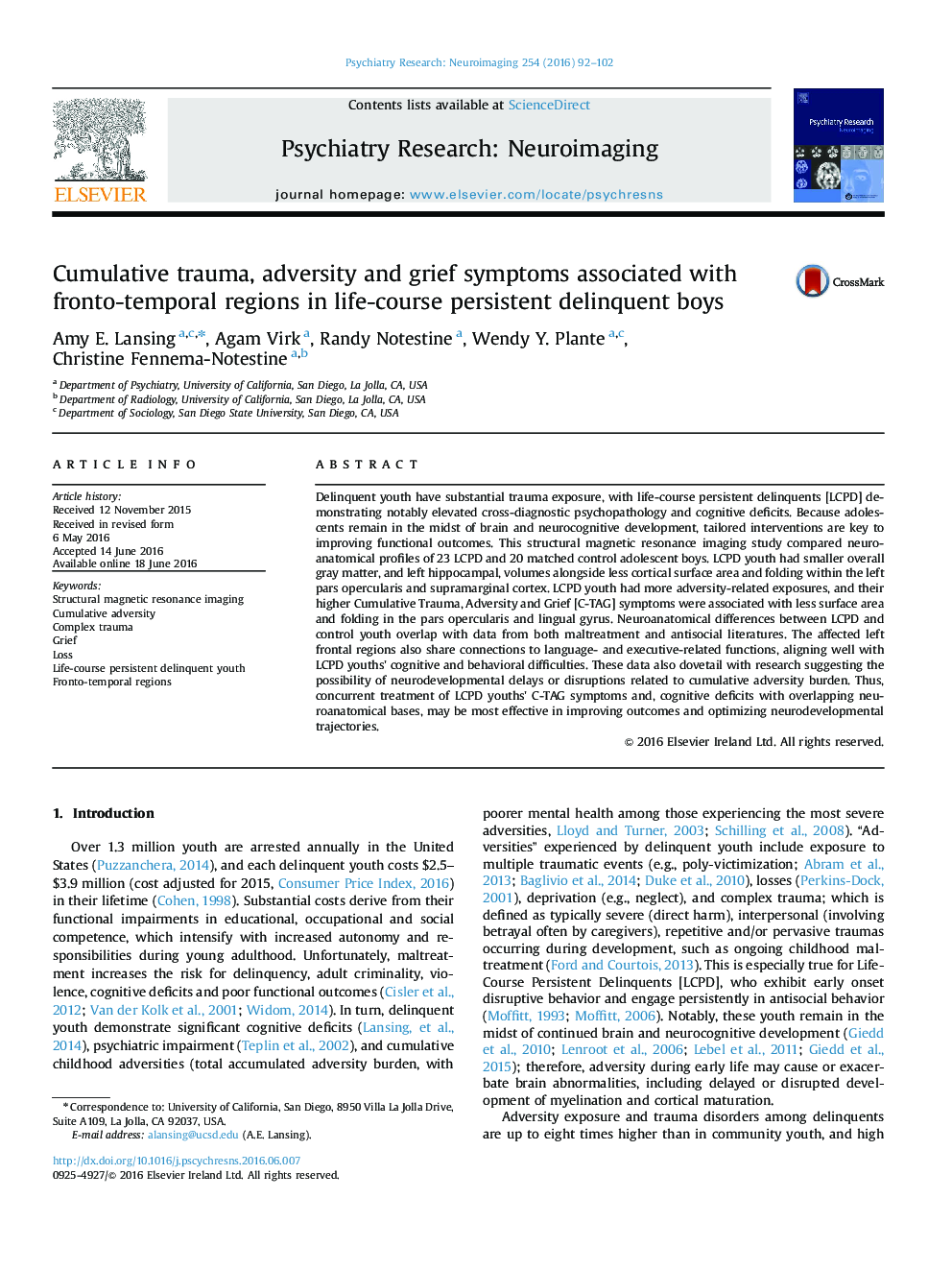| Article ID | Journal | Published Year | Pages | File Type |
|---|---|---|---|---|
| 335240 | Psychiatry Research: Neuroimaging | 2016 | 11 Pages |
•Less gray matter and smaller left hippocampal volumes in LCPD boys than controls.•LCPD had less cortical surface area in pars opercularis and supramarginal cortices.•Traumatized, conduct disordered and LCPD youths' neuroanatomical profiles overlap.•Among LCPD boys, cumulative adversity-related symptoms are linked to pars opercularis.•Concurrent treatment of adversity symptoms and cognitive deficits may be optimal.
Delinquent youth have substantial trauma exposure, with life-course persistent delinquents [LCPD] demonstrating notably elevated cross-diagnostic psychopathology and cognitive deficits. Because adolescents remain in the midst of brain and neurocognitive development, tailored interventions are key to improving functional outcomes. This structural magnetic resonance imaging study compared neuroanatomical profiles of 23 LCPD and 20 matched control adolescent boys. LCPD youth had smaller overall gray matter, and left hippocampal, volumes alongside less cortical surface area and folding within the left pars opercularis and supramarginal cortex. LCPD youth had more adversity-related exposures, and their higher Cumulative Trauma, Adversity and Grief [C-TAG] symptoms were associated with less surface area and folding in the pars opercularis and lingual gyrus. Neuroanatomical differences between LCPD and control youth overlap with data from both maltreatment and antisocial literatures. The affected left frontal regions also share connections to language- and executive-related functions, aligning well with LCPD youths' cognitive and behavioral difficulties. These data also dovetail with research suggesting the possibility of neurodevelopmental delays or disruptions related to cumulative adversity burden. Thus, concurrent treatment of LCPD youths' C-TAG symptoms and, cognitive deficits with overlapping neuroanatomical bases, may be most effective in improving outcomes and optimizing neurodevelopmental trajectories.
